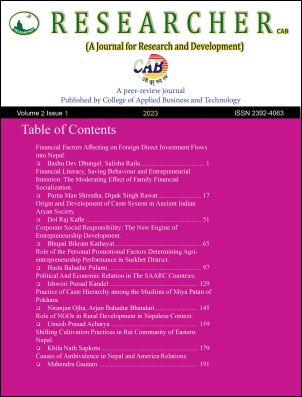Origin and Development of Caste System in Ancient Indian Aryan Society
DOI:
https://doi.org/10.3126/rcab.v2i1.57643Keywords:
Landscape, civilization, ancient Aryan society, bloodlinesAbstract
This study explores the origin and development of the caste system in ancient Aryan society in India. The caste system is a social construct that has shaped the social, economic, and political landscape of communities for centuries. The study uses a qualitative research design, with the framework based on the principle of the Varna System, meaning the division of labor according to social class. The caste system was established based on occupation and social class, dividing people into four groups: priests, rulers, producers or traders, and manual workers or servants. The caste system has endured throughout history, deeply rooted in cultural and traditional practices. The term 'caste' used to describe social hierarchy in Western countries has its roots in the Spanish and Portuguese as well as the Latin word 'casta' which only came into use in the 15th century. In India, the word 'caste' was originally used to refer to a social division system designed to preserve the purity of bloodlines within a group. Over time, the term expanded to include people with close social or blood ties as well as groups with economic privileges and rights, and it became associated with hereditary equality, independent traditional organizations, and customs. The study's objective is to explain the origins and evolution of the caste system in ancient Indian society.




